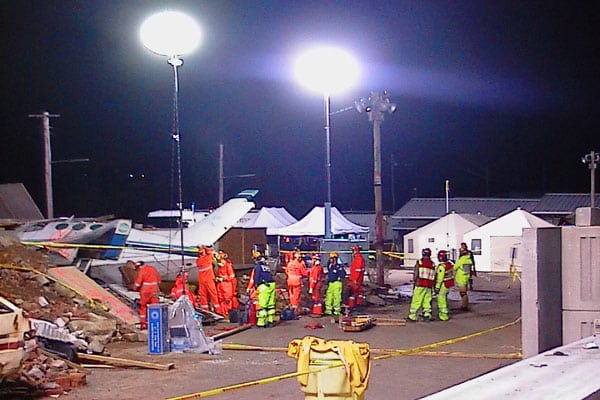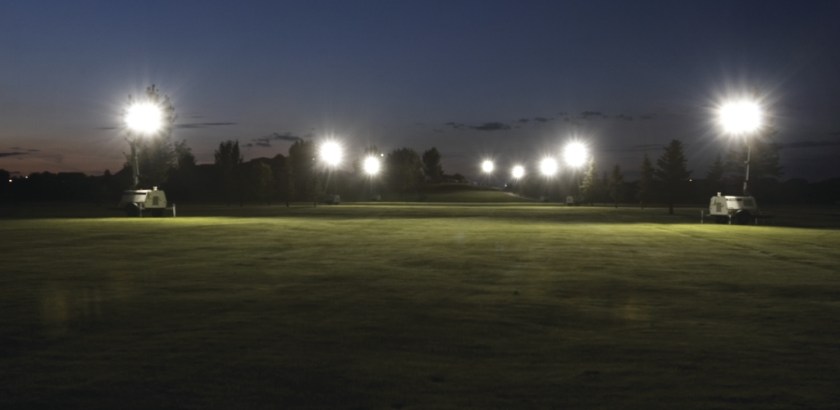In a disaster zone, visibility can mean the difference between life and death. That’s why choosing the right lighting system isn’t just a preference—it’s survival.
Emergency responders use outdoor balloon lights1 because they offer fast setup, glare-free brightness, and wide-area coverage, even in harsh or unpredictable environments.

When seconds count, responders can’t afford poor lighting. Traditional lighting systems often take too long to deploy, create blinding glare, or don’t hold up in extreme conditions. I’ve seen firsthand how emergency crews operate under pressure. They need lighting that won’t fail them. That’s where balloon lights come in—designed for speed, strength, and reliability.
What makes outdoor balloon lights a top choice in unpredictable emergencies?
When disaster hits, chaos follows. Emergency workers are already battling limited time, damaged infrastructure, and high stress. Add poor lighting, and you’ve got a dangerous mix.
Balloon lights provide instant, 360-degree illumination2 that’s soft, powerful, and safe to use in crowded or chaotic zones.

I’ve spoken to many emergency teams who’ve replaced traditional lights with outdoor balloon systems. The difference? They no longer worry about glare blinding their crew or unstable stands tipping over in wind or uneven terrain. These lights inflate and lock in place fast. And since they’re glare-free, responders can work longer and safer without visual fatigue or disorientation.
What are the key features that make balloon lights suitable for rescue and emergency work?
Let’s break down the core reasons why balloon lights are becoming standard in emergency toolkits:
| Feature | Benefit for Emergency Use |
|---|---|
| Glare-free 360° lighting | Prevents blinding workers and allows full situational view |
| Quick setup (under 3 mins) | Critical for time-sensitive response |
| Stable inflatable base | Stays upright even on uneven or soft ground |
| Low power consumption | Works efficiently on generators or batteries |
| Waterproof & dustproof | Ideal for rain, snow, or dusty debris zones |
| Cool-touch LED design | Safe for crowded areas or near flammable materials |
How do balloon lights improve safety during nighttime operations?
Darkness hides danger. From fallen power lines to unstable structures, low visibility adds risk.
Balloon lights illuminate hazards without creating shadows or hotspots, allowing crews to see everything clearly and move with confidence.

In real rescue missions, I’ve watched as teams navigate collapsed buildings and flooded streets. Harsh spotlight beams create more problems than they solve. Shadows make it hard to judge distance or see obstacles. Balloon lights solve this by giving even, ambient light that mimics daylight. This reduces accidents and boosts team coordination. It’s not just about lighting up the area—it’s about reducing stress and improving response outcomes.
How do balloon lights perform in harsh environments?
Emergencies don’t wait for good weather. Rain, wind, snow—these are part of the job.
Outdoor balloon lights are built to handle extreme conditions with high IP ratings, durable materials, and stable structure.

I remember one case where a fire team had to operate during a typhoon aftermath. Traditional floodlights failed—they shorted out or fell over. But their inflatable balloon lights stayed up. The IP65 waterproof housing kept them going through downpours, and the sealed LED modules never overheated. These lights are made for the worst days. Their shockproof design also means they can take a hit and keep running.
Are balloon lights flexible enough for various emergency scenarios?
Not every crisis is the same. Urban fires, rural floods, road accidents—each scene needs a different lighting setup.
With compact storage, different mounting options, and quick mobility, balloon lights adapt easily to multiple emergency uses.

One responder told me how they used the same balloon light on a highway crash and later in a mountain search. It mounted to a tripod one day and a vehicle roof the next. The soft, wide light was perfect for both. That’s the kind of versatility emergency crews need. They don’t have time to carry multiple lighting systems. They need one that can do it all.
What role does glare-free lighting3 play in team efficiency and communication?
It’s not just about seeing—it’s about seeing each other clearly. In emergencies, every shout, hand signal, or facial cue matters.
Glare-free lighting improves team coordination by reducing eye strain, shadows, and miscommunication.

Imagine trying to coordinate a rescue while shielding your eyes from bright beams. Crews stumble, tools get misplaced, orders get missed. Balloon lights reduce all that. They don’t blind you or throw hard shadows across the scene. Everyone can see and be seen. That’s critical for saving lives and keeping the team safe.
Conclusion
Emergency balloon lights offer rapid setup, glare-free coverage, and rugged design—making them the trusted lighting choice when every second matters.
-
Discover the advantages of outdoor balloon lights, including their quick setup and durability in harsh conditions, crucial for emergency situations. ↩
-
Learn how 360-degree illumination provides comprehensive visibility, reducing risks and enhancing team efficiency during nighttime operations. ↩
-
Explore how glare-free lighting enhances visibility and safety for emergency responders, improving coordination and reducing accidents. ↩




